Start your day right
Sign up for Essential California for news, features and recommendations from the L.A. Times and beyond in your inbox six days a week.
You may occasionally receive promotional content from the Los Angeles Times.
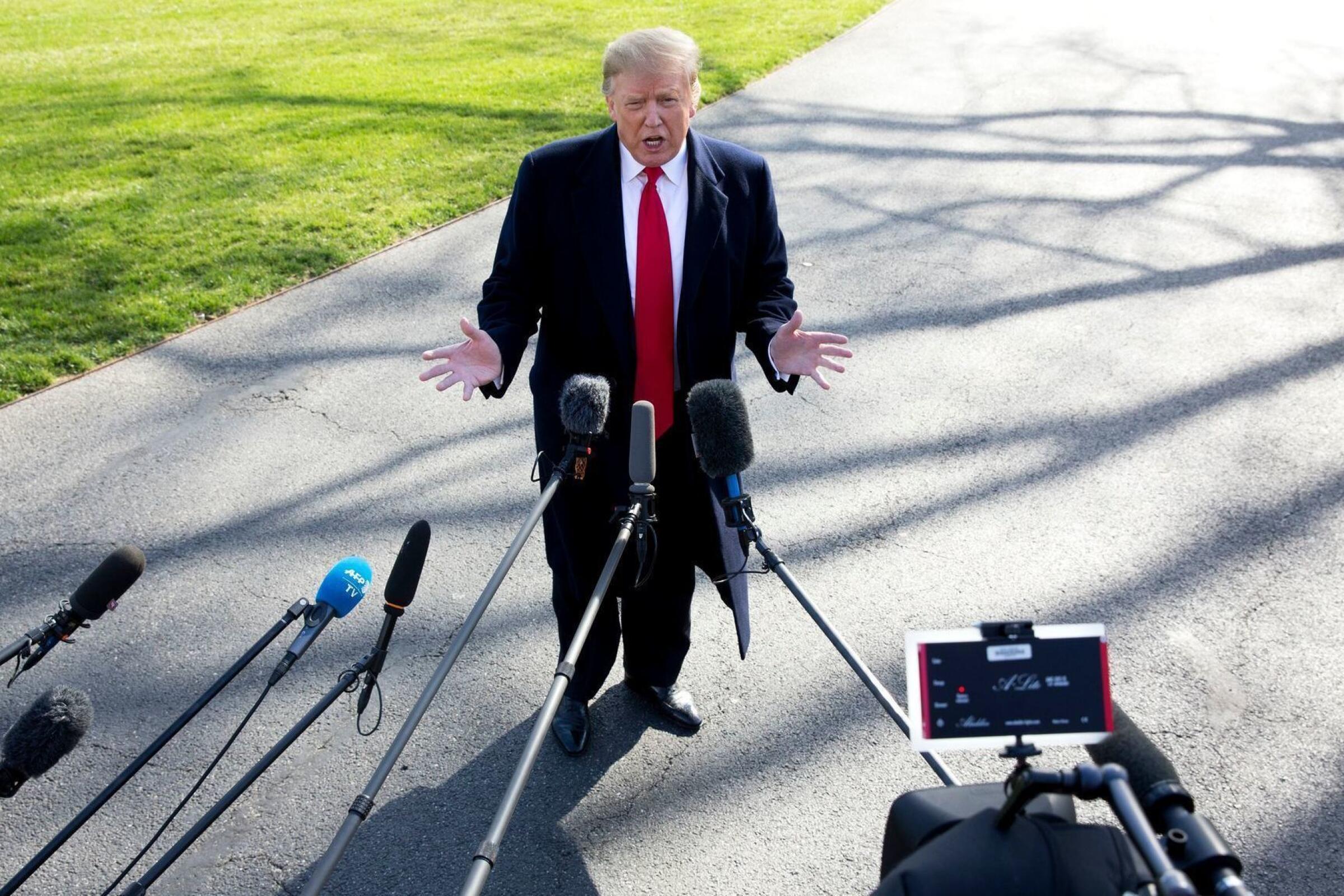
WASHINGTON — A year of President Trump is better measured in dog years, with so much being packed into 12 months — a Mueller report, trade talks, tweet storms, rally tirades, terrorist raids, impeachment testimony. As a White House reporter, I often can’t recall what the story was two days ago. Thinking back to January is overwhelming.
For the first 25 days of 2019, the federal government remained shut down as the president tried and failed to pressure Democrats into approving money for a border wall. At year’s end, we interrupted our nonstop coverage of impeachment hearings to bring you the president’s decision to overrule the secretary of the Navy in order to halt disciplinary action against a Navy SEAL who was convicted of posing with the corpse of a prisoner in Iraq. And then we interrupted that to inform you that the Supreme Court might or might not weigh in to settle the matter of whether Congress has a right to the president’s closely held financial disclosures.
The fire hose of news, or what seems in the moment to qualify as “news,” is relentless. The constant, of course, is Trump. That I can remember.
I also remember being in the West Wing in March the day after Atty. Gen. William Barr held a news conference to prebut the report by Robert S. Mueller III, informing the public that the special counsel, after a 22-month investigation, had found “no collusion” between the president’s campaign and the Russians who meddled in the 2016 election. When the report actually became public, the reality proved different — Mueller had opted not to make a decision about whether the president had obstructed justice.
This year, good news was overshadowed by a government shutdown, impeachment debates, mass shootings and cheating scandals.
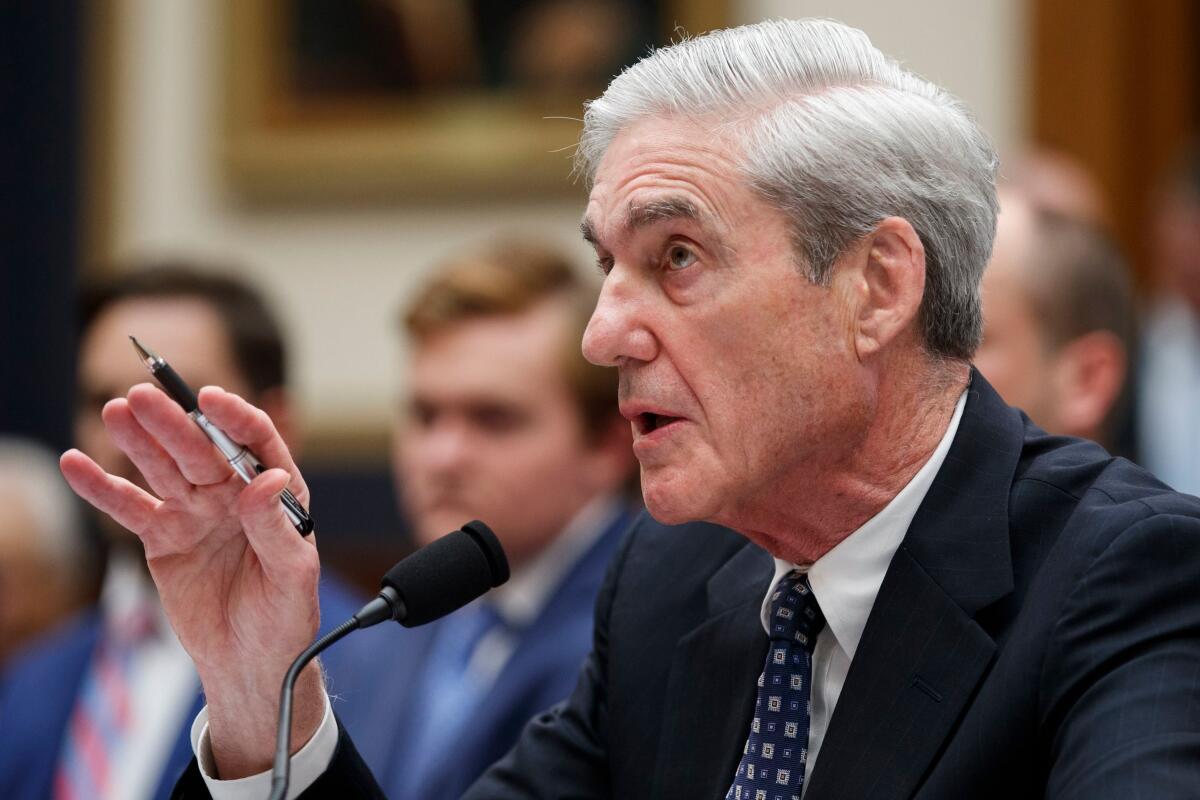
But on the day Barr released his advance spin, the mood inside the White House was something akin to a winning team’s locker room, minus the mist of sprayed champagne. Deputy Press Secretary Hogan Gidley had cut out and was annotating a newspaper cartoon depicting the president’s most ardent critics in a “Mueller Madness” NCAA-style bracket. Kellyanne Conway crowed in the White House driveway, telling reporters that all who’d suggested wrongdoing by the president owed him an apology.
The president, relieved to be off the hook politically, immediately found another fight, telling a surprised group of Republicans that he wanted to try again to repeal Obamacare. He quickly dropped that idea after GOP senators and aides, bruised from their first failed repeal push and from the 2018 midterms that had delivered Democrats the House, informed him that the politics of another healthcare fight was something less than advantageous.
The most read stories include pieces on Nipsey Hussle, the college admissions scandal and two very California topics: earthquakes and rising waters.
I also remember the president’s reactions in August after a white supremacist concerned about halting a “Hispanic invasion” gunned down 22 people at an El Paso Walmart, which was followed hours later by another gunman opening fire and killing nine at the popular nightlife district in Dayton, Ohio.
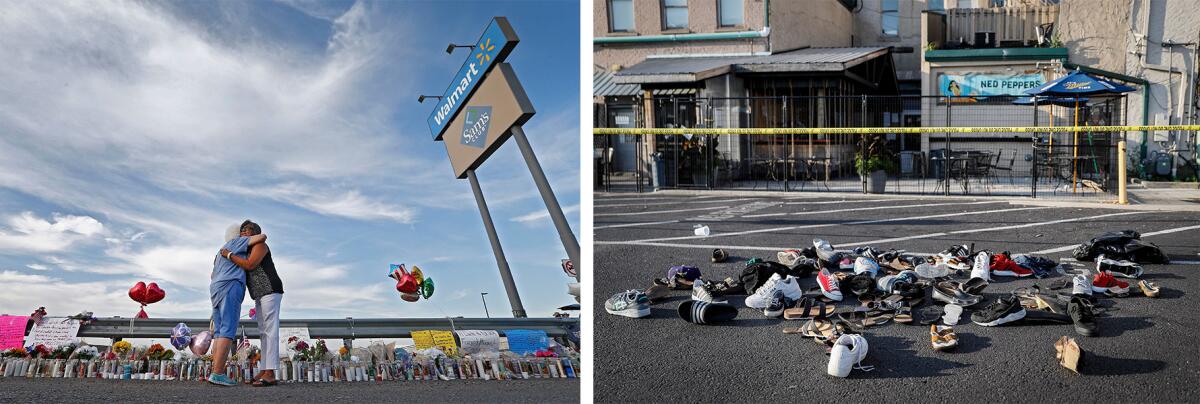
Days later I flew with Trump on Air Force One to visit with victims and first responders in both cities. He had already expressed an openness to enacting federal red flag laws and expanding background checks, promising to “come up with something that’s going to be really good.” But shortly after we arrived, the president’s focus on the shooting victims turned inward after Dayton’s mayor, who accompanied him on a visit to one of the city’s hospitals, told the media after his departure that Trump’s past rhetoric had been “divisive.”
As we flew from Dayton to El Paso, Trump tweeted that the mayor and “failed Presidential Candidate (0%) Sherrod Brown” were “totally misrepresenting what took place inside the hospital.” The media were not allowed to follow the president inside the hospital, but White House social media director Dan Scavino assured the world in a tweet that Trump “was treated like a Rock Star.” Within days, intensive news coverage of the shootings began to ebb, and so, too, did Trump’s interest in gun reform. The promise to “come up with something” was eventually shelved entirely.
I also remember flying with Vice President Mike Pence to Ankara in October, a 5,418-mile face-saving venture hastily arranged days after Trump agreed during a phone call with Turkey’s president to move U.S. troops off the Syrian border, enabling a Turkish invasion and the slaughter of Kurdish soldiers who had fought alongside U.S. troops. The crisis, at least for the president, wasn’t the invasion itself but the uproar it caused among Republicans in Washington, who were appalled over Trump’s hasty retreat and the discouraging message sent to U.S. allies the world over.
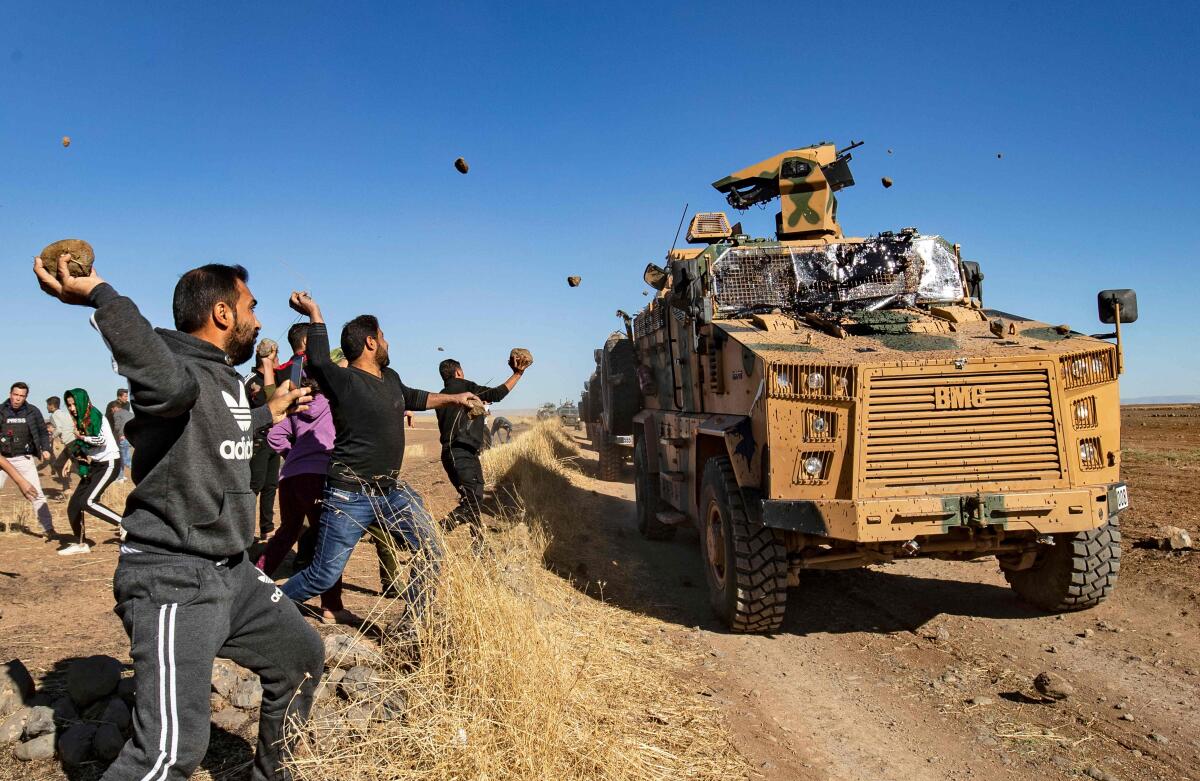
After five hours of private talks at the presidential palace, our motorcade sped back to the U.S. Embassy, where Pence earnestly announced a temporary “cease-fire.”
In the van, while we were scrambling to learn the details of the cease-fire agreement, we listened to a live stream of a White House briefing by Chief of Staff Mick Mulvaney, who admitted the quid pro quo at the center of the Democrats’ burgeoning impeachment inquiry by telling the world to “get over it.”
That gob-smacker overshadowed another Mulvaney bombshell, his announcement that Trump intended to hold next year’s Group of 7 summit at his private Florida club (he would later reverse course after GOP allies were reluctant to defend the decision).
It has been another year of Trump-dominated programming, shocking story lines overtaken by more shocking story lines, few of them ever fully resolved. Trump and Congress did nothing all year to address climate change, the nation’s crumbling infrastructure or the epidemic of mass shootings. The president threw his weight behind a push to oust Venezuela’s president, then quickly abandoned the project. Trade agreements with China and Japan, and a nuclear deal with North Korea, remain unfulfilled promises, all hanging in suspended animation as the president asks the public to believe that the final handshakes could be just around the corner. He did finally win congressional approval for his revamped North American Free Trade Agreement at year’s end, 12 months after orchestrating an initial signing ceremony.
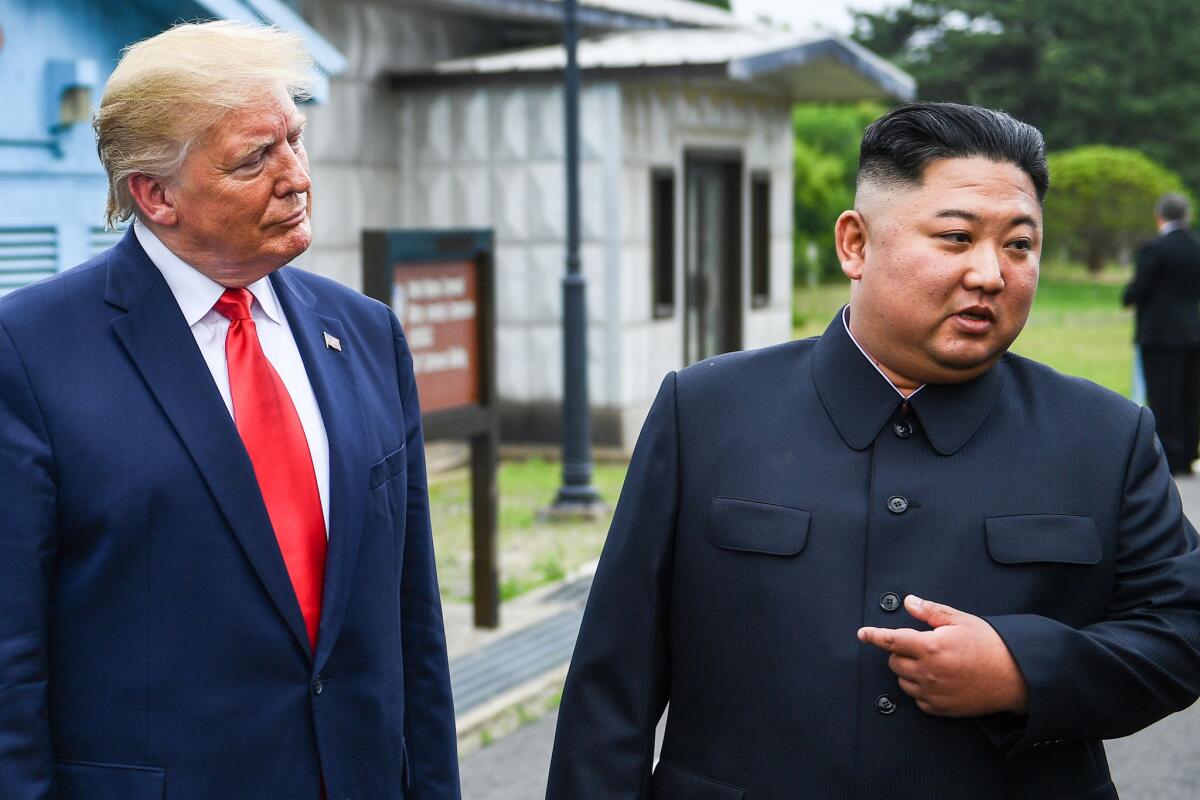
For all the nonstop action and commentary, the president’s approval rating has remained static. The base stayed put, and so did Republicans, even through impeachment proceedings as the evidence piled up. More administration officials departed. More of their replacements were brought on in an “acting” capacity. Many of the departed inked lucrative book deals, in hopes of sating the public’s endless appetite for Trump stories.
Year in Review
More from our look back on 2019
The 19 stories our readers engaged with most this year
The most retweeted Los Angeles Times tweets of 2019
The world saw tragedies, protests and big changes in politics
In September, the president mistakenly tweeted that Hurricane Dorian could impact Alabama, even though forecasts showed it wouldn’t, and then used a Sharpie to edit an official map of the storm’s projected path, drawing an expanded line around Alabama and the nation’s attention to the lengths he would go to to avoid admitting a simple mistake. He insulted Rep. Elijah E. Cummings and denigrated his hometown of Baltimore as a “rat and rodent infested” place where “no human being would want to live.” When Cummings died in October, Trump praised him and offered his condolences in a statement but seemed to be the only Washington politician absent from his funeral. In announcing the successful operation that led to the death of Islamic State leader Abu Bakr Baghdadi, Trump fabricated details of the raid, saying the terrorist died “whimpering and crying” in a tunnel — a detail that no one in the military seemed able to corroborate.
He visited the U.S.-Mexico border to show off a segment of new wall, even though it was a replacement for a preexisting barrier. He encouraged China to investigate Joe Biden while denying, during one of many South Lawn shout-a-thons, that he’d demanded Ukraine investigate the former vice president.
At the White House, Trump joked with the leader of Turkey, where there is no free press, about the “fake news” media he had to deal with. He embraced Kim Jong Un in a photo op at the DMZ. He blithely threatened the whistleblower. He stuck to conspiracy theories. He pardoned a Thanksgiving turkey.
That’s just what I can remember. It all seemed quite significant at the time.
Start your day right
Sign up for Essential California for news, features and recommendations from the L.A. Times and beyond in your inbox six days a week.
You may occasionally receive promotional content from the Los Angeles Times.